Forex trading is one of the most popular forms of investment in today’s world. It involves buying and selling currencies in the hopes of making a profit.
However, to make a significant profit, traders need to invest a large amount of capital; this is where leverage comes into play.
Contents
Leverage in forex trading is the ability to control a large amount of currency with a relatively small investment.
This allows traders to take advantage of market movements and potentially make more significant profits than they would have with a smaller investment.
Understanding leverage is crucial for any trader looking to venture into the world of forex trading. In this section, we will discuss the basics of leverage in forex trading and its significance.

How Does Leverage In Forex Work?
In Forex trading, leverage allows traders to control a larger position size with a smaller amount of capital.
It amplifies both potential profits and losses. For example, with 50:1 leverage, a trader can control $50,000 with $1,000.
If the market moves favorably, profits are magnified; however, if it moves against the trader, losses are similarly intensified.
While leverage can enhance returns, it also increases risk, and traders must carefully manage their positions to avoid significant losses.
Understanding the risks and using leverage judiciously is crucial for successful Forex trading.
Key Takeaways:
- Leverage in forex trading allows traders to control larger positions with a smaller investment.
- Understanding leverage is crucial for any trader looking to venture into the world of forex trading.
- Leverage amplifies both potential profits and losses.
- Effective risk management is essential when using leverage in forex trading.
- Margin requirements and leverage ratio are important concepts to understand in forex trading.
Understanding Leverage in the Forex Market
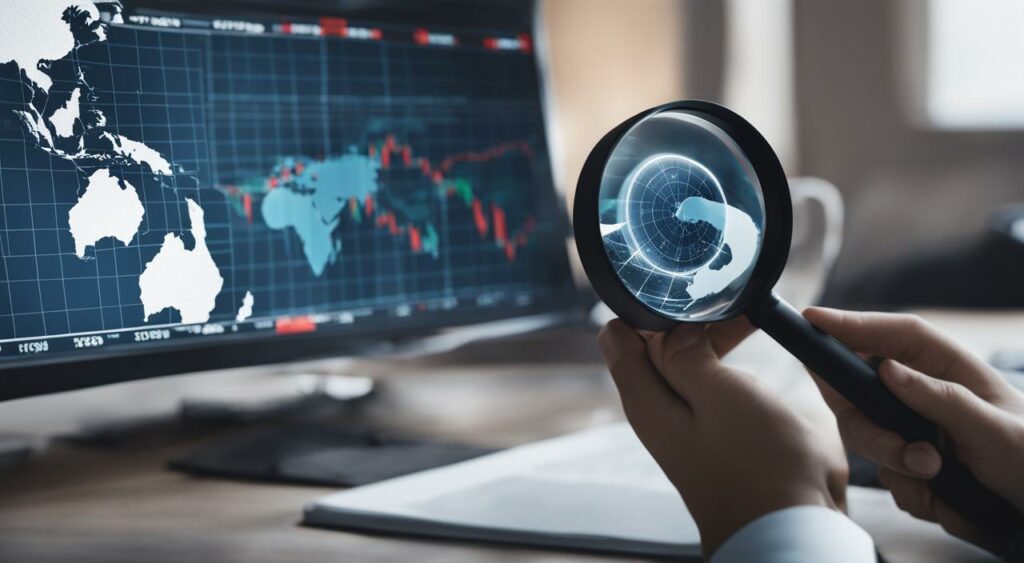
Forex trading involves the exchange of currencies, and leverage is one of the key components of forex trading.
Understanding leverage in currency trading is essential for traders who want to take advantage of the opportunities available in the forex market.
Leverage is essentially a loan that a trader borrows from a broker to control a larger position than their capital would allow.
By using leverage, traders can magnify their potential profits, but they also expose themselves to higher risks.
How Leverage Works
Let’s say, for example, a trader has $1,000 in their trading account and wants to control a position of $10,000.
Without leverage, the trader would need to use their entire account balance to open this position.
However, with leverage, the trader can borrow $9,000 from their broker and use it to open the position, while keeping their $1,000 as collateral.
The amount of leverage a trader can use depends on the broker they are working with. Leverage is typically expressed as a ratio, such as 50:1 or 100:1.
For example, a 50:1 leverage ratio means that a trader can control a position 50 times larger than their account balance.
The Risks of Leverage
While leverage can magnify potential profits, it can also increase the risk of losses.
If a trade goes against a trader’s position, the losses can exceed the initial investment, known as a margin call.
It is important for traders to use appropriate risk management techniques, such as setting stop loss orders and monitoring their trades closely, to minimize the risks associated with leverage.
The Benefits of Leverage
Despite the risks, leverage can be a powerful tool for forex traders. It allows traders to control larger positions than their capital would typically allow, potentially increasing their profits.
With proper risk management, traders can use leverage strategically to take advantage of market opportunities and generate profits.
Understanding leverage in the forex market is an essential part of being a successful trader.
By knowing how leverage works, traders can make informed decisions about when to use it and how much to use.
The Benefits of Forex Leverage
Leverage can significantly impact forex profits, offering traders the opportunity to magnify potential gains while utilizing a smaller amount of capital.
The following section will delve deeper into the advantages of utilizing leverage in forex trading.
Increased Profit Potential
One of the primary benefits of forex leverage is the ability to increase profit potential. With leverage, traders can control larger positions than what is possible with their available capital.
This allows them to take advantage of small price movements in the currency market, which can result in significant profits when amplified by leverage.
For example, suppose a trader has $1,000 in their trading account, and they utilize a leverage ratio of 1:100.
In that case, they can control a position worth $100,000. Suppose the price of the currency pair increases by 1%.
In that case, the trader can make a profit of $1,000 instead of the $10 they would have made without leverage. This showcases the potential impact of leverage on forex profits.
Greater Trading Flexibility
Another benefit of forex leverage is that it offers greater trading flexibility. By utilizing leverage, traders are not limited to the amount of capital they have in their account.
Instead, they can open positions that are larger than their available capital, allowing them to take advantage of market opportunities that may not be feasible without leverage.
For example, suppose a trader identifies a profitable trading opportunity but does not have enough capital to open a position.
In that case, they can utilize leverage to open the desired position size in the market, potentially resulting in significant profits.
Lower Transaction Costs
Forex leverage also enables traders to lower their transaction costs.
Since they can control larger positions with a smaller amount of capital, they need to deposit less capital with their broker.
This results in lower transaction costs and allows traders to allocate more of their capital towards profitable trades.
For example, if a trader wants to open a position worth $100,000, they would usually need to deposit $100,000 in their trading account.
However, with leverage, they can control the same position size with a smaller deposit, resulting in lower transaction costs.
The Risks of Using Leverage in Forex Trading

While leverage can potentially amplify profits, it also comes with significant risks. One of the main risks of using leverage in forex trading is the potential for increased losses.
As the leverage ratio in forex increases, so does the risk of losing more than the initial investment.
This is because even small movements in currency prices can lead to significant changes in the value of an open position.
The leverage ratio in forex determines the amount of margin required to enter a trade.
Margin requirements can vary depending on the broker and the currency pair being traded, but typically range from 1% to 5%.
This means that a trader can control a position much larger than their initial investment, but it also means that a small move against the position can result in a large loss.
For example, consider a trader who has $1,000 in their trading account and decides to use 50:1 leverage to buy 50,000 units of a currency pair.
In this scenario, the required margin would be $1,000 / 50 = $20.
If the currency pair moves against the trader by just 2%, their position would be worth $980 and they would have lost their entire initial investment.
Another risk of using leverage in forex trading is the potential for margin calls. A margin call occurs when the margin level in a trading account falls below a certain threshold, typically 100%.
When this happens, the broker will automatically close out some or all of the trader’s open positions to prevent further losses.
This can result in significant losses for the trader and can wipe out their entire account. Traders should also be aware of the impact of volatility on leverage.
High levels of volatility can lead to significant price movements and increased risk of losses, especially when using high leverage ratios.
This is why it is important for traders to stay up-to-date on market news and events that can impact currency prices.
In conclusion, while leverage can offer the potential for significant profits in forex trading, it also comes with significant risks.
Traders must have a solid understanding of the risks involved and use leverage strategically and responsibly.
By setting stop-loss orders, monitoring margin levels, and staying informed about market news and events, traders can mitigate the risks of using leverage to maximize their profits in forex trading.
The Mechanism of Leverage in Forex Trading

To understand how leverage works in forex trading, it’s important to first understand the concept of margin trading.
Margin trading involves borrowing funds from a broker to trade a larger position size than one’s account balance would allow.
The amount of leverage available to a trader is typically expressed in a ratio, such as 50:1 or 100:1. For example, let’s say a trader has a $1,000 account balance and wants to place a trade worth $50,000.
With a leverage ratio of 50:1, the trader would only need to put up $1,000 (or 2% of the position size) as margin to open the trade.
The broker would provide the remaining $49,000. Leverage is what allows traders to control larger positions with a smaller amount of capital.
However, it’s important to note that while leverage can amplify potential profits, it can also amplify potential losses. Let’s continue with the example above.
If the trade goes in the trader’s favor and the position increases in value by 10%, the trader would make a profit of $5,000 (10% of $50,000).
However, if the trade goes against the trader and the position decreases in value by 10%, the trader would lose $5,000.
This means that while the trader only risked $1,000 (the margin), the potential loss was much larger due to the leverage used.
It’s important for traders to understand the risks associated with using leverage and to use it strategically.
The amount of leverage used should depend on factors such as trading experience, risk tolerance, and overall market conditions.
“Leverage is a double-edged sword. It magnifies both profits and losses.”
In order to determine the impact of leverage on potential profits or losses, traders can use a margin calculator.
This tool allows traders to input the size of the trade, the leverage ratio, and the currency pair being traded to calculate the required margin and potential profit or loss.
Applying Leverage in Forex Trading

Traders can use leverage in forex trading to amplify their profits and take advantage of market opportunities that may not be feasible without leverage.
However, it is critical to use leverage responsibly and strategically to avoid significant losses.
When applying leverage in forex trading, traders should consider their risk tolerance and set position sizes accordingly.
They should also use stop-loss orders to manage risk and limit potential losses.
One effective way to use leverage is to combine it with other trading tools and strategies, such as fundamental and technical analysis.
By conducting thorough market analysis, traders can identify potential entry and exit points and use leverage to maximize their profits.
Using Leverage on Forex: Tips and Strategies
Here are some tips and strategies for using leverage effectively in forex trading:
- Develop a trading plan: Before using leverage, traders should develop a clear trading plan that outlines their goals, risk tolerance, and strategies for managing risk.
- Choose a reliable trading platform: Traders should use a reputable and reliable forex trading platform that offers flexible leverage options and robust risk management tools.
- Conduct thorough market analysis: Traders should use a combination of fundamental and technical analysis to identify potential entry and exit points and make informed trading decisions.
- Manage exposure: Traders should manage their exposure to different currency pairs and avoid over-leveraging their trades.
- Monitor market conditions: Traders should stay up-to-date with market news and events that may impact their trades and adjust their positions accordingly.
Example Using Leverage on Forex
Suppose a trader has $1,000 in their trading account and wants to open a position on EUR/USD. Without leverage, they can only trade a standard lot, which is worth $100,000.
However, by using leverage, the trader can control a larger position with a smaller amount of capital.
For example, if the trader uses a 1:100 leverage ratio, they can control a position worth $100,000 with just $1,000 in their account.
This amplifies their potential profits but also increases their potential losses if the trade goes against them.
Suppose the trader opens a long position on EUR/USD at 1.2000 and uses the 1:100 leverage ratio. If the price of EUR/USD rises to 1.2100, the trader will make a profit of $1,000, or 100 pips.
However, if the price of EUR/USD falls to 1.1900, the trader will lose $1,000, or 100 pips. This is why it is crucial to use leverage strategically and manage risk effectively when trading forex.
The Role of Leverage in Forex Profits
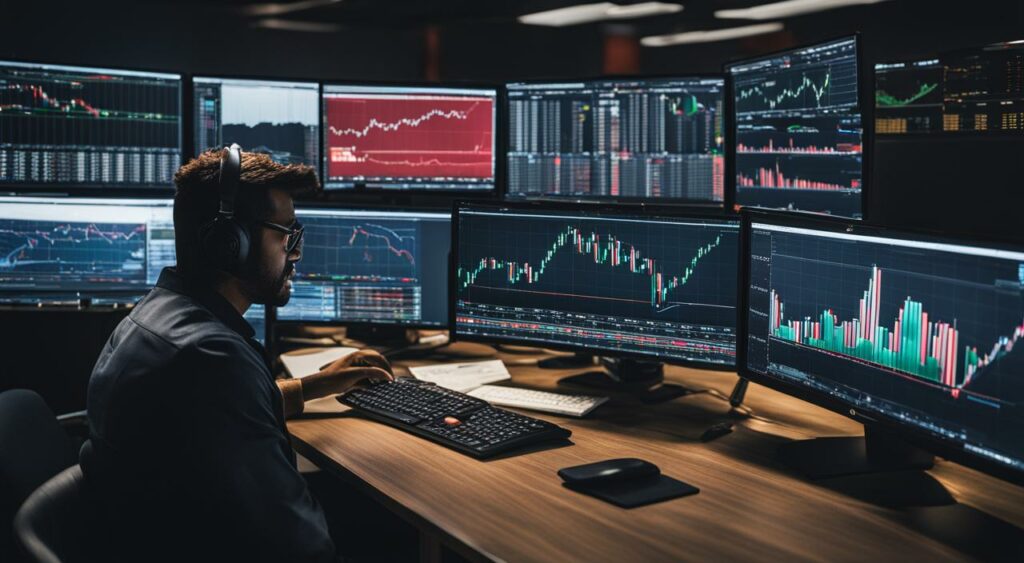
One of the most significant impacts of leverage on forex trading is its effect on profits.
Leverage amplifies both gains and losses, making it a powerful tool for traders who use it wisely, but a dangerous one for those who do not understand its risks.
This section examines how leverage affects profits in forex trading and provides examples to illustrate its impact on trading outcomes.
How Does Leverage Affect Profits in Forex?
Leverage in forex trading allows traders to control a larger position with a smaller amount of capital.
This means that even small movements in exchange rates can lead to significant gains or losses.
For example, let’s say a trader invests $1,000 and uses a leverage ratio of 1:100. This means that the trader controls a position worth $100,000.
If the exchange rate moves in the trader’s favor by 1%, the trader would make a profit of $1,000, or 100% of the initial investment.
However, if the exchange rate moves against the trader by 1%, the trader would lose all of the initial investment.
It’s important to note that leverage magnifies the effects of market volatility. This means that while it can increase profits, it can also increase losses.
For this reason, traders must carefully manage their risks when using leverage and keep a close eye on market movements.
What Does Leverage Do in Forex?
Leverage amplifies forex trading profits by allowing traders to control larger positions with a smaller amount of capital.
However, it also increases the potential risk of losses. To illustrate this point, let’s consider an example.
| Initial Investment | Leverage Ratio | Total Position Size | Exchange Rate | Profit/Loss |
|---|---|---|---|---|
| $1,000 | 1:10 | $10,000 | 1.2000 | +1% |
| $1,000 | 1:10 | $10,000 | 1.1800 | -1% |
In the first example, the trader invests $1,000 and uses a leverage ratio of 1:10 to control a position worth $10,000.
If the exchange rate moves in the trader’s favor by 1%, the trader would make a profit of $100, or 10% of the initial investment.
However, if the exchange rate moves against the trader by 1%, the trader would lose $100, or 10% of the initial investment.
As we can see from the example, leverage can have a significant impact on profits in forex trading.
Therefore, traders must be aware of the risks and use leverage strategically to maximize gains while minimizing losses.
Risk Management and Leverage in Forex Trading

When it comes to leveraging in forex trading, risk management is critical.
Trading with leverage amplifies both potential gains and losses, making it essential to have solid risk management strategies in place.
Effective risk management involves developing a trading plan with clearly defined objectives, as well as a thorough understanding of trading strategies and risk tolerance.
Money management techniques, such as position sizing and stop-loss orders, can help minimize losses and maximize profits.
Discipline is also crucial in risk management. Traders must have the self-control to stick to their trading plan, even when emotions are high.
Psychology plays a significant role in forex trading, and managing emotions is vital to implementing effective risk management strategies.
One way to manage risk while using leverage is to limit exposure.
This can be achieved by diversifying a trading portfolio, avoiding over-leveraging, and using stop-loss orders to limit potential losses.
Trading Strategies
Developing and implementing a trading strategy is an essential component of risk management.
Fundamental analysis and technical analysis are two common approaches to analyzing forex markets and identifying potential trading opportunities.
Fundamental analysis evaluates economic, financial, and geopolitical factors that may impact currency prices.
Technical analysis, on the other hand, uses charts and other indicators to identify trends and potential market reversals.
Money Management
Effective money management techniques are critical to minimize risk and maximize profits when using leverage in forex trading.
Position sizing is one such technique, which involves determining the appropriate position size based on the trader’s account size, leverage, and risk tolerance.
Stop-loss orders provide an additional layer of protection by automatically closing out a position when losses reach a predetermined level.
Discipline and Psychology
Discipline and psychology are essential components of successful risk management when leveraging in forex trading.
A trader must be disciplined enough to stick to their trading plan and avoid emotional decision-making.
Developing a strong mindset and remaining calm under pressure can help traders implement risk management strategies effectively.
Margin and Leverage: Key Concepts
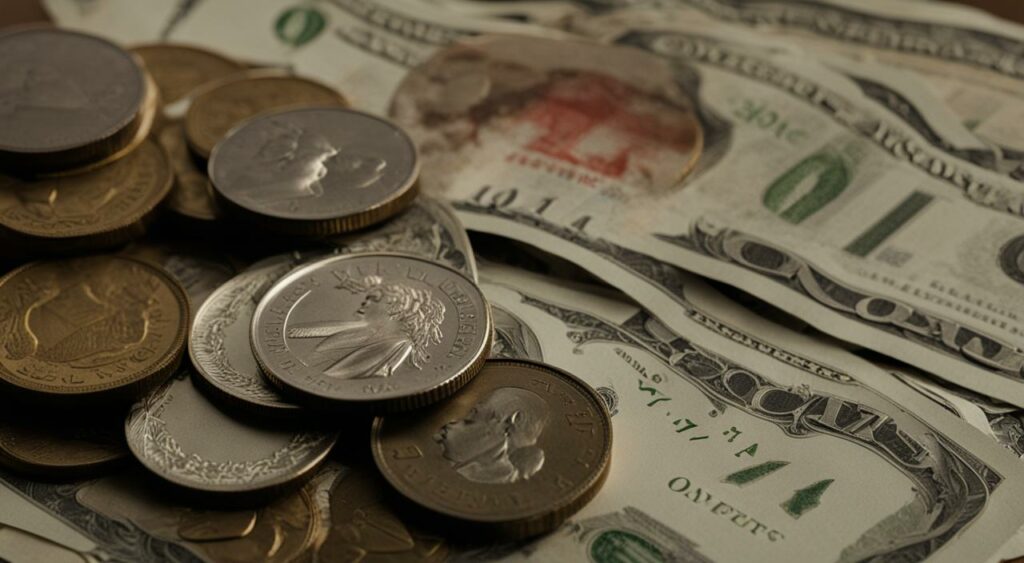
In forex trading, margin and leverage are important concepts to understand. Leverage refers to the use of borrowed funds to increase the potential return of an investment.
Margin, on the other hand, is the amount of money that is required to open and maintain a leveraged position in the market.
The concept of leverage is closely related to margin trading.
When traders open a margin trade, they can control a large position of an asset with a relatively small amount of capital.
The leverage ratio determines the amount of capital required to open a particular position.
For example, if the leverage ratio is set to 1:50, then a trader can open a position of $50,000 with only $1,000 of capital.
Margin requirements vary depending on the broker and the assets being traded.
Brokers typically require a certain level of margin to be maintained in the trading account to cover any potential losses.
This is known as the maintenance margin.
If the account falls below the maintenance margin level, a margin call may be issued, requiring the trader to deposit additional funds to cover the losses.
In forex trading, margin and leverage work hand in hand.
The leverage ratio affects the amount of margin required to open a position, and margin requirements determine the amount of capital that can be leveraged.
It is important for traders to understand both concepts to effectively manage risk and maximize profits in the forex market.
Overall, margin and leverage are key concepts in forex trading that every trader should understand.
By utilizing leverage, traders can control larger positions and potentially increase their profits.
However, leveraging also comes with increased risk, and traders must carefully manage their margin requirements and account balances to avoid margin calls and significant losses.
Leveraging Forex Trading: Strategies and Tips
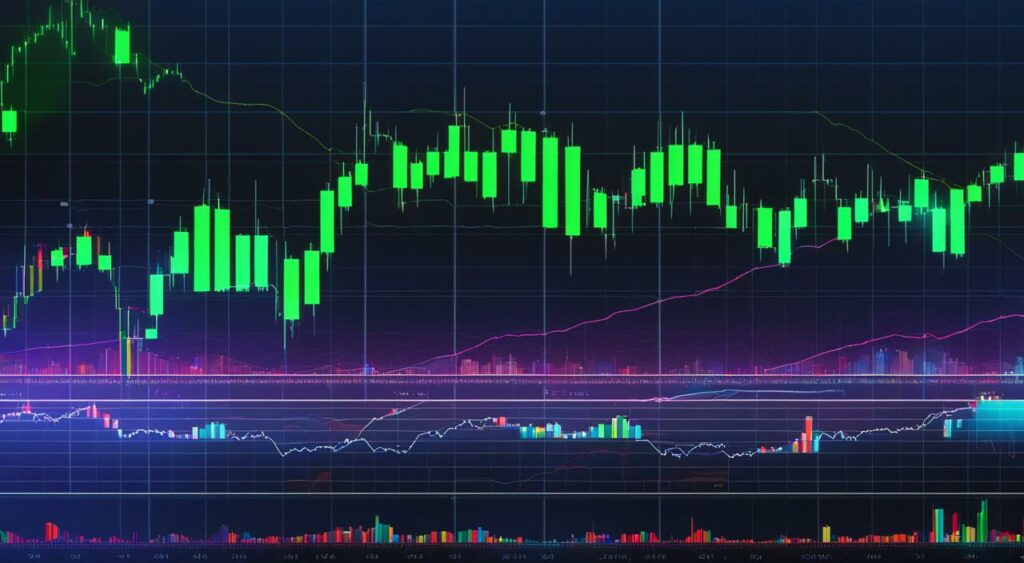
Effective leveraging in forex trading requires a solid trading plan. A trading plan is a comprehensive strategy outlining the trader’s approach to the market.
It specifies the objectives, risk tolerance, money management, and trading methods to be used.
Having a trading plan allows traders to make informed trading decisions and avoid impulsive decisions based on emotions or news events.
A trading platform is a software application that enables traders to execute trades and access market data.
Different platforms offer different features, so it is important to choose a platform that suits the trader’s needs and preferences.
Some popular platforms include MetaTrader, TradingView, and NinjaTrader.
Fundamental analysis involves evaluating economic, financial, and other qualitative and quantitative factors that can affect currency value. This requires monitoring news releases, economic indicators, and other market events.
Technical analysis involves using charts, indicators, and other mathematical tools to identify trends, support, and resistance levels.
Indicators are mathematical calculations displayed on trading platforms that help traders analyze market data. Examples include moving averages, Bollinger Bands, and relative strength index (RSI).
Charts are graphical representations of market data that enable traders to visualize patterns, trends, and other important information.
Traders must also consider exposure when leveraging forex trades.
Exposure refers to the amount of risk the trader is willing to take on in any given trade. It is important to diversify a trading portfolio to minimize exposure to any one market.
A trading account is an online account with a forex broker that enables the trader to execute trades.
Traders need to select a broker that offers a reliable and user-friendly trading platform, competitive spreads, and customer support.
In conclusion, effective leveraging in forex trading requires a solid trading plan, a suitable trading platform, and a sound understanding of fundamental and technical analysis.
Traders must also consider exposure when diversifying their trading portfolios, and choose a broker that meets their needs.

Conclusion
In conclusion, understanding leverage in forex trading is a crucial component of success in the market.
While leverage can amplify profits, traders must be aware of its potential risks and must exercise discipline and risk management techniques when using it.
Effective use of leverage requires a well-crafted trading plan, an understanding of market trends, and the ability to conduct thorough analysis.
It is also important to choose a trading platform that supports effective leveraging strategies.
By managing risks, understanding key concepts related to margin and leverage, and staying disciplined and focused, traders can leverage their trading accounts to achieve profitable outcomes in the forex market.
Ultimately, leveraging forex trading presents opportunities for experienced and novice traders alike.
It is a powerful tool that, when used strategically and responsibly, can help traders achieve their financial goals in the forex market.
Download Order Block indicator
FAQ
How does leverage in forex work?
Leverage in forex trading allows traders to control larger positions with a smaller amount of capital. It works by borrowing funds from a broker to open larger positions than the trader’s account balance would allow.
What is leverage in the forex market?
Leverage in the forex market refers to the ability to control a larger position in a currency pair with a smaller amount of capital. It allows traders to amplify potential profits, but it also increases the risk of losses.
What are the benefits of forex leverage?
Forex leverage offers several benefits, including the ability to potentially generate higher profits from small market movements, access to larger trading positions, and the opportunity to take advantage of market opportunities that may not be feasible without leverage.
What are the risks of using leverage in forex trading?
Using leverage in forex trading comes with risks. Increased leverage can result in larger losses if a trade goes against the trader’s position. Traders should be aware of the potential for margin calls and the importance of managing risk when using leverage.
How does leverage work in forex trading?
Leverage in forex trading allows traders to control larger position sizes than their account balance would allow. It involves borrowing funds from a broker to open trades, with the broker providing a certain leverage ratio based on the trader’s account equity.
How can I apply leverage in forex trading?
Traders can apply leverage in forex trading by selecting the desired leverage ratio offered by their broker when opening trades. It is important to use leverage strategically, considering risk management, position sizing, and profit potential.
How does leverage affect forex profits?
Leverage can amplify both profits and losses in forex trading. While it can magnify potential gains, it also increases the risk of larger losses. Traders should carefully consider the impact of leverage on their trading outcomes.
What is the role of leverage in forex profits?
Leverage plays a significant role in forex profits by allowing traders to control larger positions with a smaller amount of capital. It offers the potential for increased profitability, but it is essential to balance the upside with the increased risk.
How can I manage risk when using leverage in forex trading?
Risk management is crucial when using leverage in forex trading. Traders should develop a trading plan, set risk tolerance levels, use appropriate money management techniques, and maintain discipline and psychological control.
What are the key concepts of margin and leverage in forex trading?
Key concepts related to margin and leverage in forex trading include margin call, margin level, maintenance margin, and margin requirements. Understanding these concepts is essential to manage risk effectively.
What are some leveraging forex trading strategies and tips?
Some leveraging forex trading strategies and tips include developing a comprehensive trading plan, utilizing reliable trading platforms, conducting fundamental and technical analysis, using indicators and charts, identifying trends, managing exposure, and choosing the right trading account type.


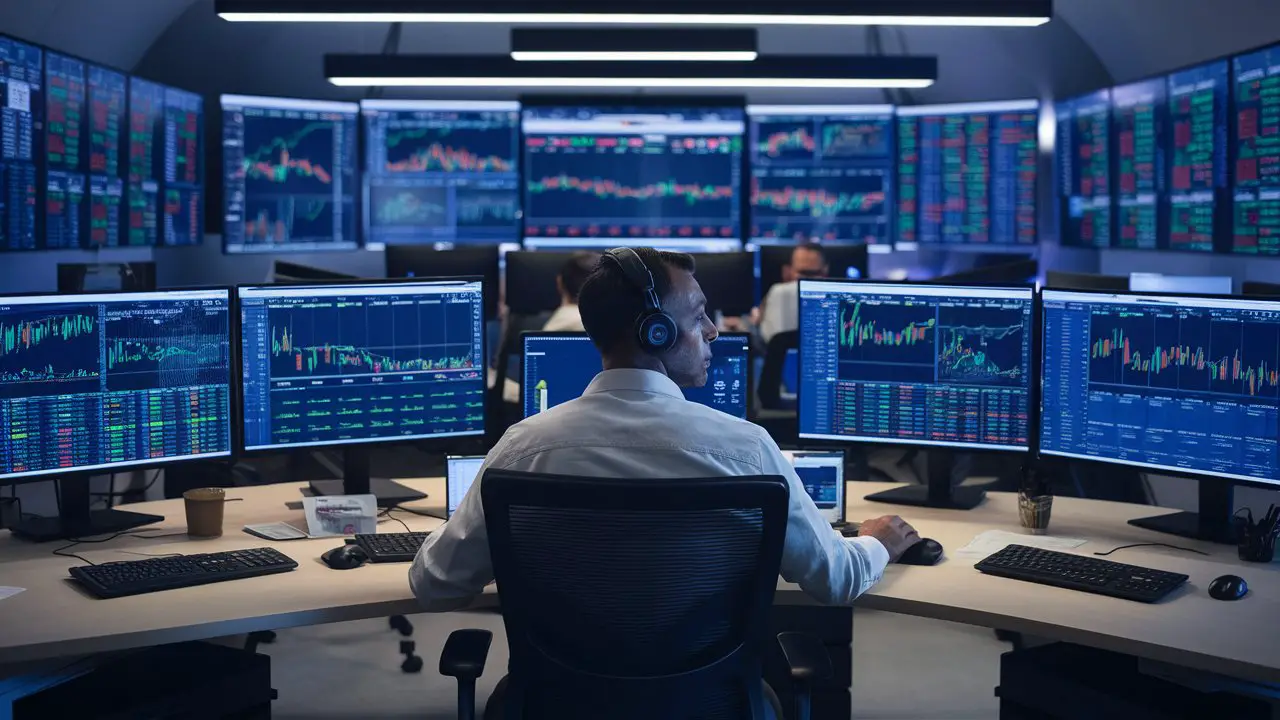


Leave a Reply